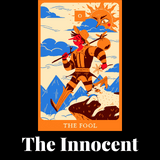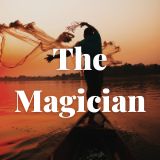Why Create Characters using Jungian Archetypes?
By Glen C. Strathy
While people you know are usually the best source of character ideas, you can often develop a more interesting cast for your story if you create characters using Jungian archetypes or modify your existing characters to fit the archetypes. Compared to Dramatica archetypes, which are based on the different roles characters play in the overall plot of a story, and are therefore most useful when you're writing plot-driven stories, Jungian archetypes are based on a theory of personality. This makes them a better tool when you are writing character-driven stories that are focused on relationships and personalities.
Moreover, you can easily combine Jungian and Dramatica archetypes and gain the best of both worlds -- create a cast of characters who all feel unique yet balance each other well and have plenty of scope for conflict, cooperation, and interesting relationships.
If you haven't done so already, you may want to look at the article on Jungian Character Archetypes, which goes into detail on the traits of these archetypal characters. As a quick review, here are the names of the archetypes...
As you might imagine, there are two basic ways to create characters using Jungian archetypes.
1. You might decide from the outset that you want certain archetypes to appear in your story. For instance, if you are writing an adventure or thriller, you might want your protagonist to be an archetypal Hero. You might want his girlfriend to be a Caregiver, his boss to be a Ruler, his sidekick to be a Jester, the antagonist to be a Magician etc. This may feel a little cliched. But if you then give each of these characters a set of specific traits (physical traits, background, abilities, etc.) you can turn them into original, authentic, and well-rounded characters who won't feel like cliches.
More importantly, you will be putting your characters into unique situations, where their archetypal drives will have to respond in original ways.
2. Many writers start by developing a set of well-rounded characters before they even think about plot. You may prefer this approach. But once you have developed your characters a little, you may apply one of the archetypes to each of them in order to develop their personalities.
Either way, there are several advantages you can gain when you create characters using Jungian archetypes...
5 Reasons to Create Characters Using Jungian Archetypes
1. Clarifying the Essence of a Character in Your Own Mind
Characters, like real people, can be complex, with many different facets to them. It can be difficult to hold all the various bits of information about a character in your mind when you are writing, especially if the character is a minor character, and you have a lot of minor characters in your story.
You may find it much easier to have a strong, clear image of the character in your mind rather than a pile of verbal information. Images are a way of organizing a lot of information in a coherent form that includes the relationships between the various facts. This is why people say "a picture is worth a thousand words."
An image of a character can a lot of hold information about their personality as well as their physical traits.
Similarly, each of the Jungian archetypes is best understood as an image that summarizes a lot of information about a personality in a coherent form that can be instantly brought to mind. When you assign each character in your story a Jungian archetype, you can easily and quickly recall the image of the characters' personalities when you are writing a scene about them. The image will tell you how each character will act and react to whatever situation you put them in. In fact, a lot of writers feel that when they have a clear grasp of their characters, it feels as though the characters themselves are writing the story and the writer is just transcribing it.
2. Differentiating Your Cast of Characters
Sometimes it can be a challenge to make each character in your story distinct, especially if all the characters have a lot in common to start with.
For instance, imagine you are writing a story about a group of stay-at-home mothers who live in the same neighbourhood. You may want these characters to have many things in common, because the point of the story is to explore the lives of this particular niche in society. So you may find your characters all share a similar age, gender, economic class, culture, educational level, etc. They may have many of the same interests and concerns.
The danger is that your characters may be too much alike, which can lead to a boring story. There may be too little scope for conflict or interesting relationships among your cast. Moreover, it can be difficult for the reader as well as the writer to tell the characters apart.
But when you create characters using Jungian archetypes, you can easily differentiate the characters by personality, regardless of their superficial similarities. You can ensure all the characters have distinct drives, behaviours, priorities etc. Each character will react quite differently to events and situations and make different choices. For both you and the reader, the characters will become much easier to keep track of.
3. Creating conflict between characters.
Many of the classic conflicts between fictional characters result from the fact that they have different archetypal drives. For instance...
- A university student whose personality fits the Revolutionary archetype, may want liberate the institution from its current structure and put more power into the hands of students. This will likely bring them into conflict with a Dean who has a Ruler mentality and who feels it's important to stay in control and enforce the rules to keep the university running smoothly.
- A woman who is a Lover, who craves intimate connection, may get into conflict with her husband if he is a Sage who is more interested in books than talking about feelings.
- A government official in the agricultural department may be a Creator who wants farmers to switch to new methods that might increase crop yields. This may bring him into conflict with farmers who are Realists and want to stick with methods that are tried and true.
- An Innocent like Snow White, for whom the world is a wonderful place, may be an obstacle in the way of a Magician (her stepmother) who wants to transform the world into something more to her liking.
- A young prince who fits the Hero archetype may feel compelled to go war to for the sake of his people. As a result, he may have a falling out with his best friend who is a Jester and is inclined to just enjoy life and not worry about politics or conflicts between nations.
If you create characters using Jungian archetypes, you will find many opportunities like these for characters to come into conflict, which makes for a more interesting story.
4. Creating Other Types of Interactions.
Of course, not all relationships must be based on conflict. Often it is interesting to find ways in which characters with different archetypes can complement or support each other.
Let's take another example. Imagine your story revolves around a group of Catholic priests working in a large diocese. One of them may be a Caregiver, focused on charitable projects. One may be a Sage who is obsessed with theology and researching church history. One might be a Creator, looking to develop new forms of the mass that will appeal to non-traditionalists. One may be an Innocent who is very devote and sees only the good in everyone. One may be a Lover who is very good at building close relationships among parishioners. These characters might come into conflict... but it also might be interesting to write a story in which they all learn to work together toward a common goal and each person's concerns contribute to the group's success.
Or... to make it more simple... what if you took a priest who is a Ruler, and whose preaching revolves around getting parishioners to follow strict moral principles, and a second Priest who is a Jester and wants to make the Church more enjoyable for the parishioners by organizing fun social events and downplaying notions like "hell and damnation." You could have them come into conflict... or they could complement each other. The social events might bring more people into the Church, where they can hear the moral lessons. And the social events might become more fun for families when following the moral lessons creates a safer, more pleasant environment.
5. Creating Internal Conflict and Change
One of the secrets of the archetypes is that one person may have more than one archetype at work in their personality. In fact, on some level, everyone may have all the archetypes present within them, even though some archetypes will be dominant while others may never manifest.
This concept dovetails with Dramatica theory that sees a story as a model of a mind attempting to resolve a problem, and all characters in a story as representations of different drives within that mind.
So when you create characters using Jungian archetypes, you are free to have the characters experience internal conflict when one archetype within them conflicts with another. What happens when someone's need to be seen as a good person conflicts with their personal desires? What happens when their need to experience freedom comes into conflict with their relationships, or their need for security comes into conflict with their desire for change?
Moreover, interesting stories can result if you put a character into a situation where they are forced to express an archetypal aspect of themselves that has previously remained dormant.
For example, in J.R.R. Tolkien's works, hobbits are characters who tend to be Realists and Jesters. Most of them don't like adventure or attention. They are content to be ordinary and unimportant and enjoy their creature comforts. However, when Gandalf the wizard shows up, he tends to prod certain hobbits (Bilbo and Frodo) into taking on the roles of Explorers and Heroes. (In this, Gandalf is acting as an archetypal Magician.) At first, the hobbits are reluctant and have some inner conflict over the matter. However, one can see in the end that these hobbits had the potential to express these other archetypes all along, but needed Gandalf to give them the opportunity.
- Home
- Write a Novel
- Creating Characters
- Jungian Archetypes 2




































